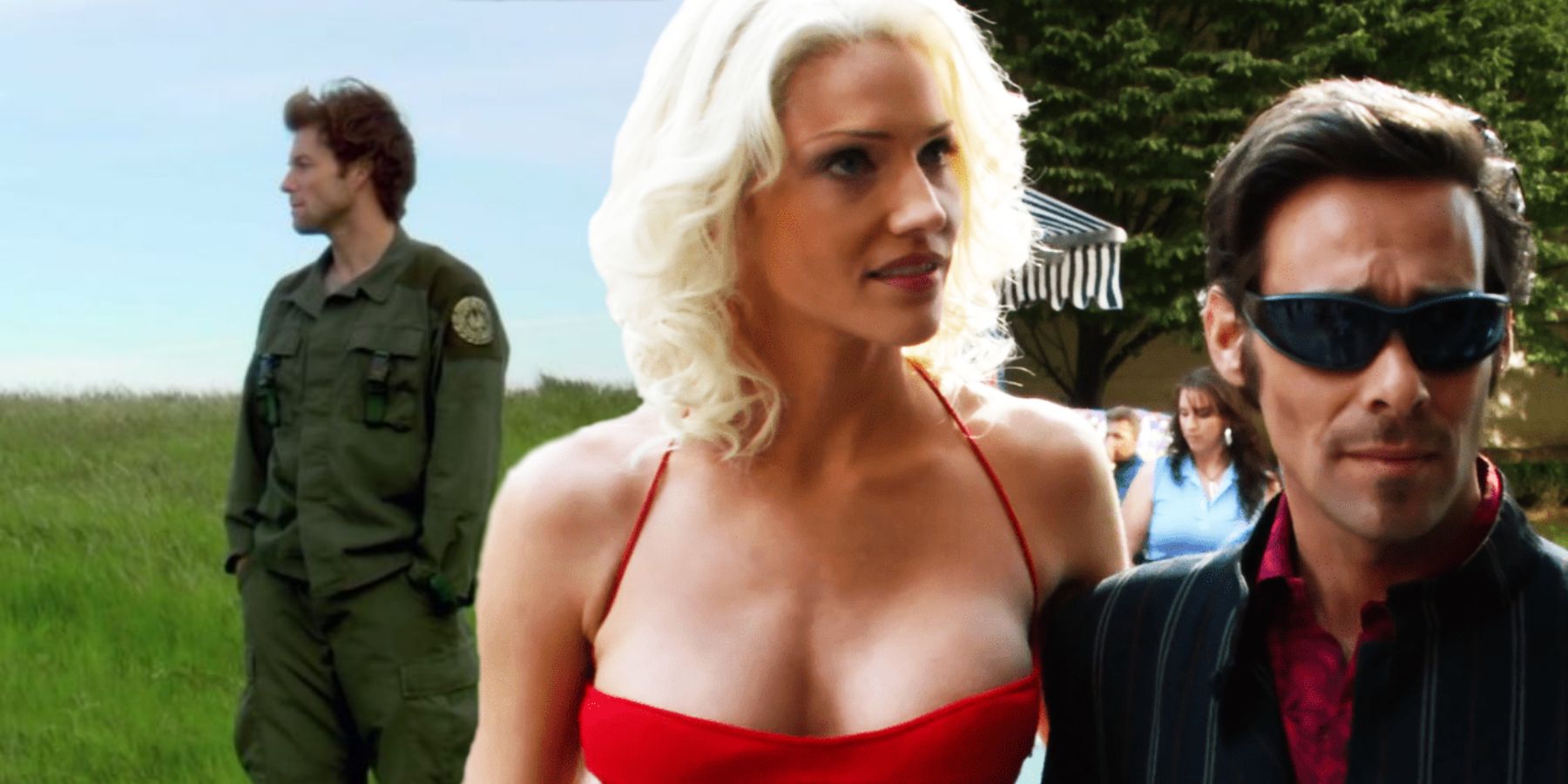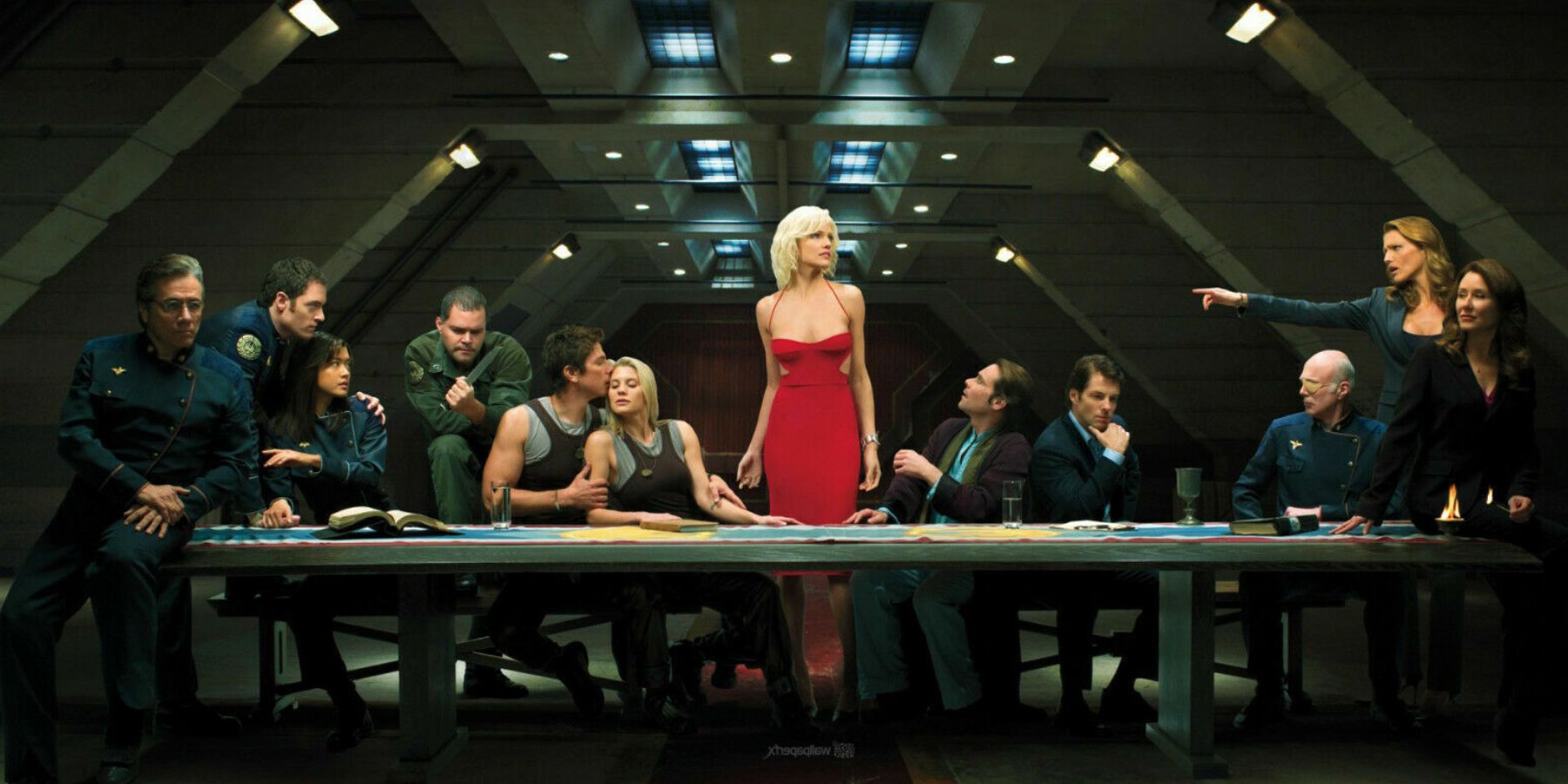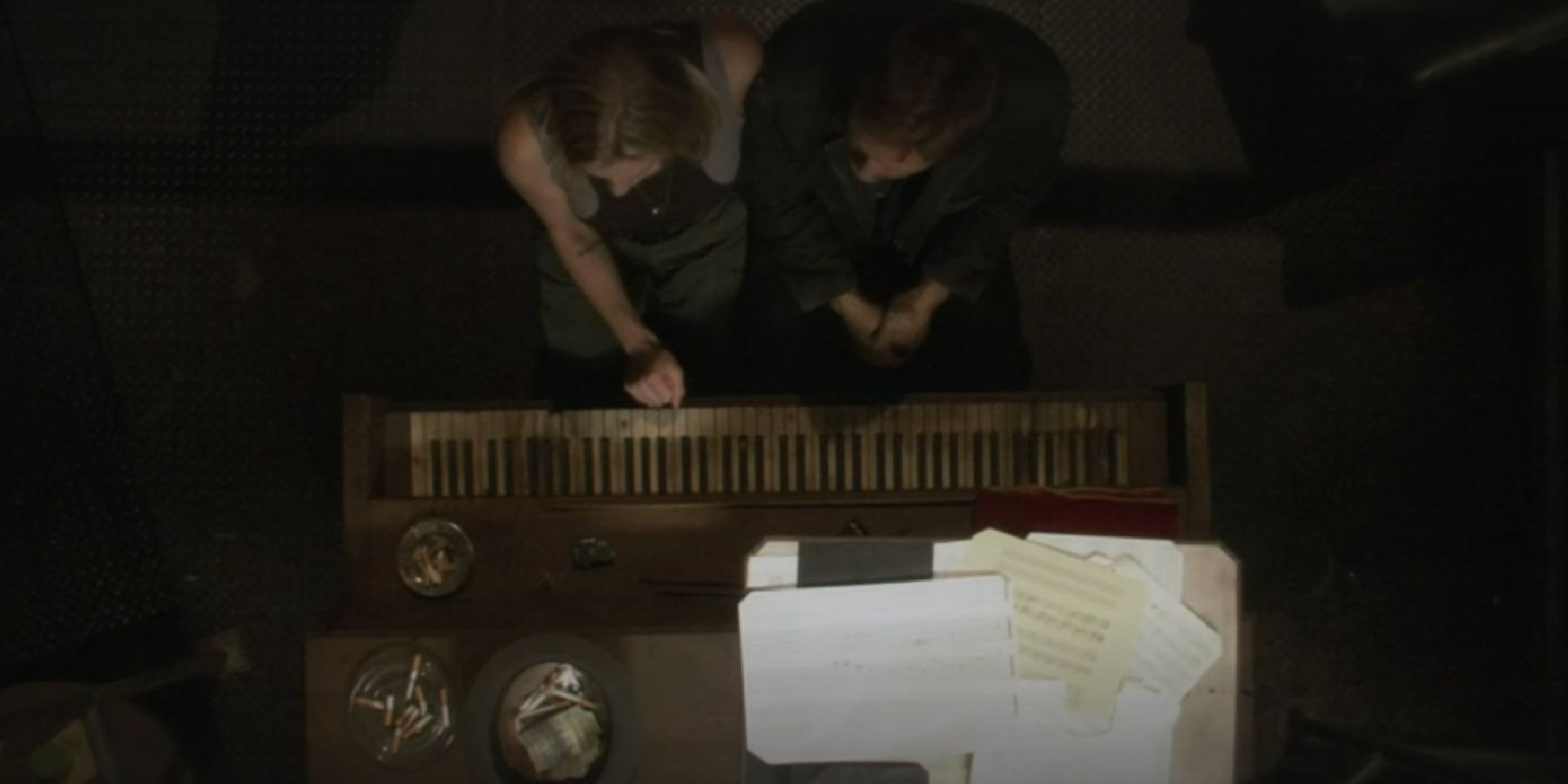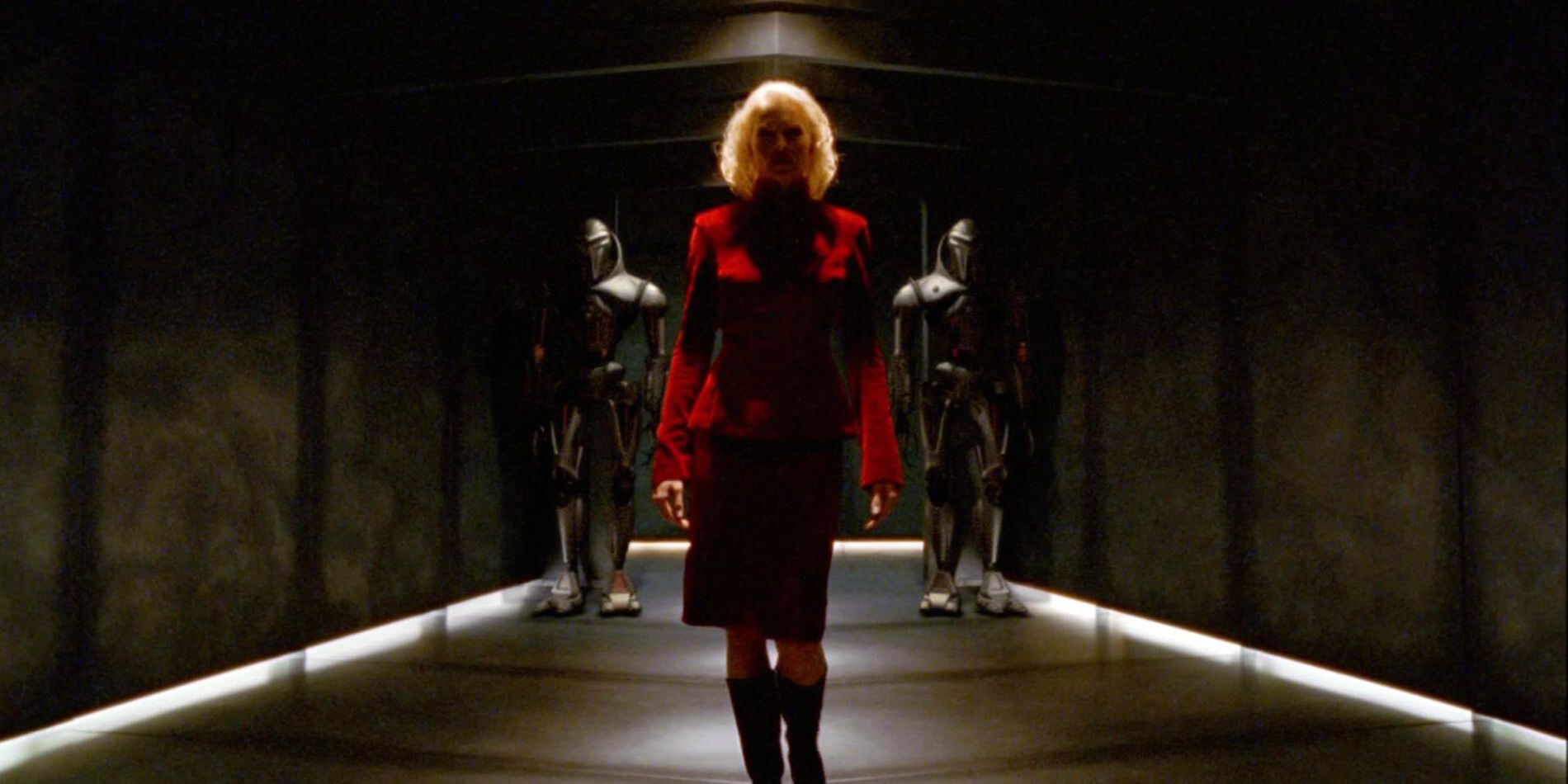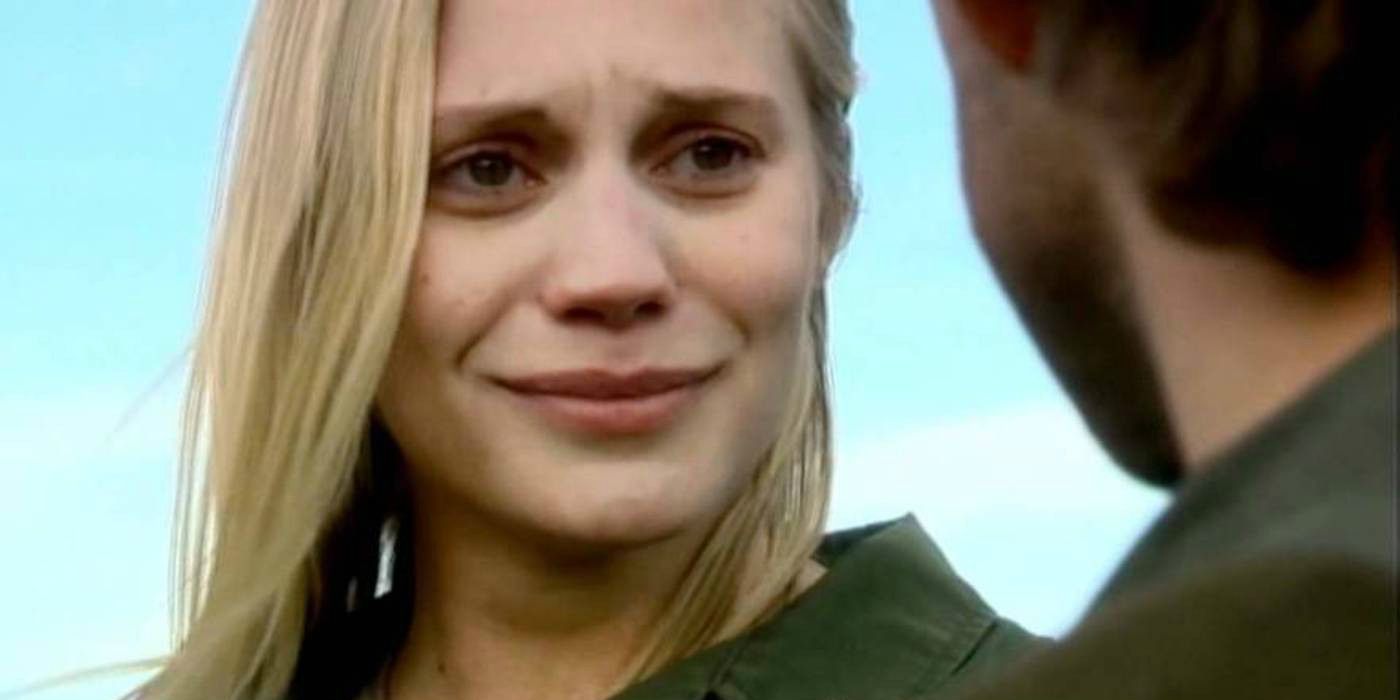The controversial finale of Battlestar Galactica continues to be a sore point for many of the show's fans, but it was a satisfying conclusion to the story of Ronald D Moore's reboot. It's easy to see why viewers were disappointed by how "easy" the discovery of Earth actually was in BSG's finale. Still, the role of Starbuck (Katee Sackhoff) in delivering the colonists to their new home had been signposted since as far back as season 3. Starbuck's angelic role is tied into the most significant criticism of the Battlestar Galactica finale - that it was too "magical" or "spiritual" for a sci-fi show that always felt so grounded.
Battlestar Galactica's anachronistic technology was emblematic of the show's more realist approach to science fiction, which helped to tell a timely political story. In essence, the war between the Colonists and the Cylons playing out on the Sci-Fi Channel was an allegory for the real-life War on Terror that was playing out across the news channels during the early 2000s. Viewers could be forgiven for thinking that the religious overtones of the Battlestar Galactica finale clashed with the realism that had always defined the show. However, mythology and religion had always been at the core of Ronald D. Moore's BSG reboot.
Battlestar Galactica's Religious Ending Was Foreshadowed From The Start
Battlestar Galactica's final season was promoted with an image that restaged The Last Supper, Leonardo da Vinci's painting of Jesus Christ and his disciples. This should have been a huge clue as to the upcoming religious ending in BSG's finale. However, Battlestar Galactica's links to religious and mythological texts go back to the very beginning of the show. In the very first episode of the BSG miniseries, Six (Tricia Helfer) was the snake in the Garden of Eden, tempting Gaius Baltar (James Callis) into betraying his people. Like Eve before him, Baltar's temptation doomed the Colonists to be ousted from the garden, in this case, the Twelve Colonies of Kobol which was destroyed by the Cylons.
Ronald D. Moore changed the Cylon's origins in Battlestar Galactica to make it clear that his reboot was a story about the dangers of playing God. By playing God, the Colonists created the Cylons, who eventually turned on their creators. The Cylons would later follow in their creators' footsteps, by building the 12 humanoid models seen across Battlestar Galactica's four seasons. Ronald D. Moore's BSG was always a creation myth, so it makes perfect sense for the ending to hint at the next stage of this repeating pattern - the viewers at home.
More overtly, Battlestar Galactica's ending was foretold in the Sacred Scrolls, the religious texts of the 12 Colonies of Kobol. In the BSG miniseries, Commander Bill Adama (Edward James Olmos) told the grieving fleet that "'Life here began out there.' These are the first words of the Sacred Scrolls…" The mission of the Fleet to find a new home among the stars was always foretold and preordained, and references to the Sacred Scrolls recur throughout Battlestar Galactica.
One of the most notable references in the Sacred Scrolls refers to President Laura Roslin (Mary McDonnell) as the "leader to guide the Caravan of the Heavens to their new homeland" who was also suffering from a wasting disease. Roslin would die of cancer shortly after finding Earth in the Battlestar Galactica finale, another event foretold and preordained by the prophecy. As well as providing a prophetic roadmap for Galactica's journey to Earth, the Sacred Scrolls were also the foundation of Colonial religion in BSG. This religion centered on the Twelve Lords of Kobol, and would play a big part in Starbuck's controversial BSG ending.
Battlestar Galactica Season 3 Set Up Starbuck's Musical Notes
Far from being a deus ex machina, the musical notes that Starbuck used to find Earth were seeded as far back as Battlestar Galactica season 3. The most obvious link is the Bob Dylan song "All Along the Watchtower" which played a memorable role in revealing the identities of the Final Five in BSG's season 3 finale. Later, in BSG season 4, the notes from that song were hidden within Hera's painting, and are transcribed by Kara and the pianist in Joe's Bar. Starbuck later converted the notes into numbers, believing that there was a numerical code hidden within them. In the Battlestar Galactica finale, it's those numbers that Starbuck used as coordinates for Galactica's blind leap of faith.
While viewers criticized this resolution for being too "easy", or the work of some higher power that removed human agency, it's in line with what was known about Starbuck up to that point. From as far back as Battlestar Galactica season 1, Starbuck was told that she had some higher destiny. She was referred to as an angel and had an affinity with Aurora, the Goddess of the Dawn after discovering an idol of her in season 3. Starbuck's little golden idol of Aurora became the figurehead of Adama's model ship, foreshadowing her role as the Fleet's guide to their final resting place.
Starbuck's real name, Kara Thrace, even foreshadowed her theological role in the Battlestar Galactica finale. While her first name was derived from Star Trek: Deep Space Nine's Major Kira Nerys (Nana Visitor), the name Thrace had a different origin. In a talk at the Edinburgh International Television Festival in 2016 (via Radio Times), Moore revealed that the surname Thrace came from a book of Ancient Greek names. The origins of Starbuck's surname, and the connections between the Lords of Kobol and the Ancient Greek Gods meant that her story was always intended to end in the way it did.
The Cylons' Philosophy Meant BSG Would Always End This Way
"All this has happened before, and all of it will happen again" wasn't just a reference to Ronald D. Moore rebooting the Battlestar Galactica franchise. It was also a defining part of the Cylon's theology that hinted at Battlestar Galactica's ending. The very end of Battlestar Galactica depicts real-world advances in technology, confronting the viewer with whether Earth will be able to escape the same fate as the Twelve Colonies of Kobol. The repeating pattern of the ultimately destructive relationship between man and machine from the original Battlestar Galactica to the reboot to the finale was always key to Moore's story.
Above all else, Battlestar Galactica was a parable about the rise of machines, and this scientific conundrum doesn't negate the reboot's overt religious themes. The Bible is best viewed not as a factual record of historical events, but as a collection of fables and parables that contain lessons about the way to live one's life. In that respect, Battlestar Galactica is Ronald D Moore's biblical parable about a society that was torn asunder by technology. It's a story that asks the viewer to consider the parallels with their own life and the direction in which contemporary society is headed. Recent discussions about Artificial Intelligence suggest that there is still much to learn from Battlestar Galactica's divisive finale.
Battlestar Galactica's Ending Stayed Faithful To Its Original Story & Character Arcs
Game of Thrones' George R.R. Martin said that the ending of Battlestar Galactica was a case of "God did it", which feels like a wilful misreading of the finale. Not least because the entity who steered Starbuck and the Galactica to Earth doesn't like to be referred to as "God". To say that the finale simply handed over control to a higher power is to fundamentally miss the religious and theological underpinning of the entire show. It also forgets that the Battlestar Galactica finale brings the story to a satisfying ending that pays off multiple plot threads and character arcs.
For example, the Battlestar Galactica finale pays off the story of Starbuck's destiny, fulfills Laura Roslin's tragic prophecy, and brings the war with the Cylons to a spectacular ending. Also, despite the influence of a higher power and its various messengers, the ending of BSG still leans more toward the scientific and rational. The final revelation that life on Earth developed from the half-human half-Cylon Hera is more in line with paleontology than theology.
It's also incredibly telling that paradise in the Battlestar Galactica finale is a prehistoric Earth without technology. In disposing of all their technology and living a simpler life on Earth, the crumbling barriers between humans and Cylons are finally broken down to create just one race. It's a utopian ending that reflects Battlestar Galactica's humanist perspective: despite ideological or genetic differences, everyone is the same and deserves to be treated fairly. In uniting humans and Cylons, Ronald D. Moore stayed true to his story of what it meant to be human in an age where technology had begun to blur the definitions between organic and artificial life.

